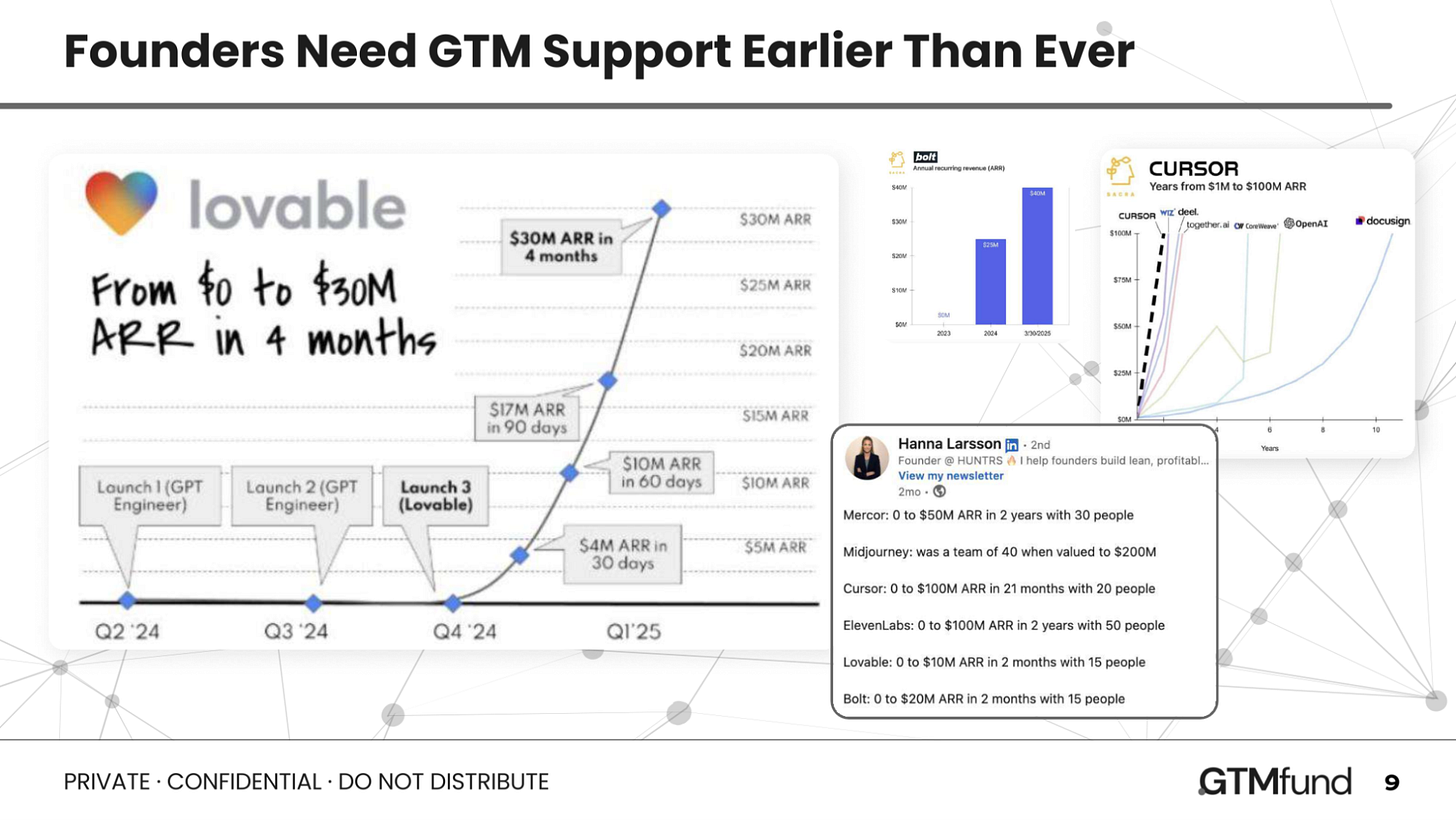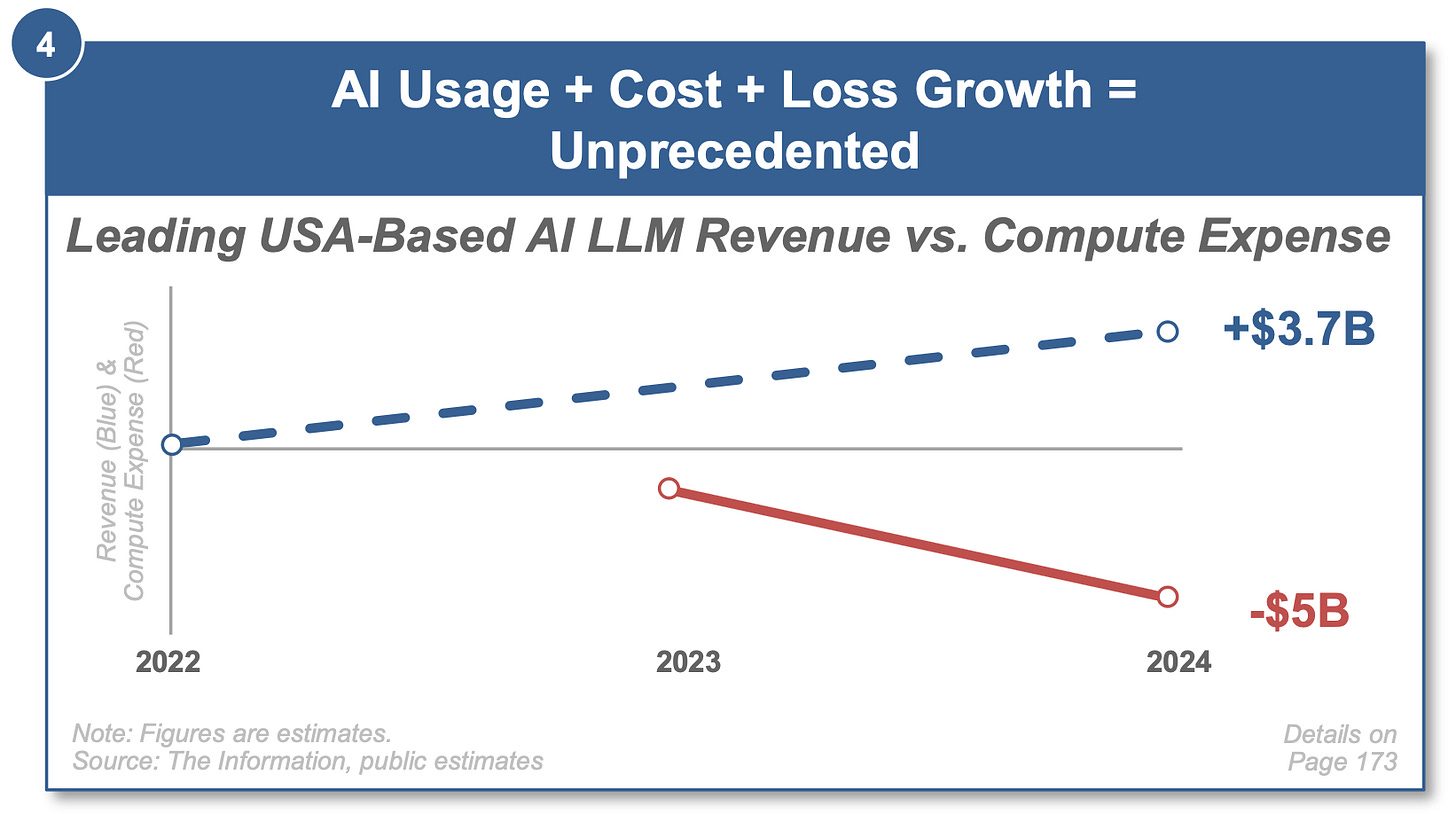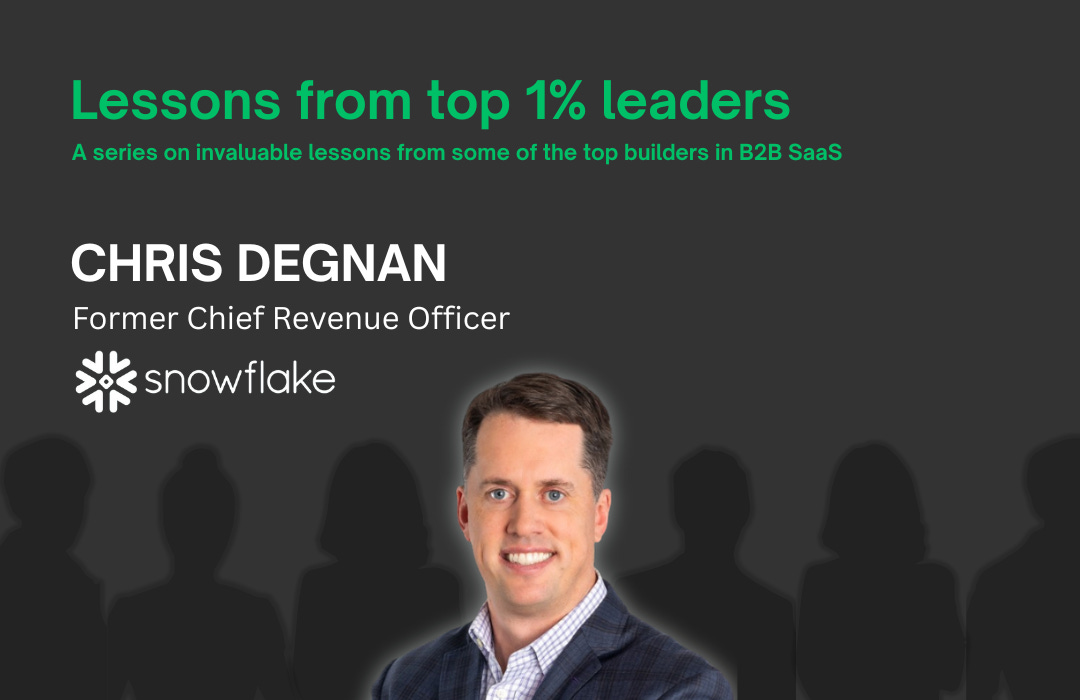Mary Meeker’s 2025 AI Report

Hello and welcome to The GTM Newsletter by GTMnow – read by 50,000+ to scale their companies and careers. GTMnow shares insight around the go-to-market strategies responsible for explosive company growth. GTMnow highlights the strategies, along with the stories from the top 1% of GTM executives, VCs, and founders behind these strategies and companies.
Mary Meeker doesn’t publish often. But when she does, it usually defines how the next wave of tech gets built.
Her Internet Trends reports helped a generation of founders navigate shifts in consumer behavior, platforms, and growth models.
Her latest release, Trends: Artificial Intelligence (2025), is her first in 5 years! It’s a 340-slide deep dive into how AI is reshaping business, product, and go-to-market strategy.
Buried inside the headline charts are quiet revolutions in how teams get built, distribution strategies, and what it now takes to earn customer trust.
This post distills 8 of the most important and under-the-radar GTM implications from her 340-slide analysis. Each takeaway is paired with real examples and tactics you can apply now.
1. The GTM org is getting both smaller and smarter
“AI will shrink org size and increase output.”
This is one of the boldest predictions in the report and it’s already playing out.
Companies like Ramp (valued at $7.6B), Harvey (built on OpenAI), and Runway are proving that AI-native teams can operate with the efficiency of legacy orgs 10x their size.
At Harvey, <100 employees are supporting Fortune 100 legal teams with generative AI agents. At Ramp, GTM, finance, and ops teams are stitched together with custom automations, not middle managers.
AI startups are hitting ARR quicker than ever before, with some achieving $5M ARR in nearly half the time it took SaaS peers – 24 months vs. 37 months.
We talked through this at the GTMfund Annual General Meeting (AGM) – you can see a few additional examples of companies like Lovable, Cursor and Mercor in this slide from the AGM:

If you’re interested in more behind the scenes AGM content, two formerly private sessions were published publicly after the amount of positive feedback that they received:
What this means:
- If you’re hiring: design for lean, AI-leveraged teams from the start. Replace “add more people” with “design smarter workflows.”
- If you’re job searching: expect more scrutiny and higher expectations per seat. Your contribution-per-head will matter more than your title.
2. GTM efficiency is no longer headcount-driven
In the new world, team output = humans × agents.
Mary Meeker flags the rise of the “computational labor unit”—the effective output of one human augmented by multiple AI agents.
This compounding dynamic is showing up across early-stage SaaS:
- Teams deploying AI SDRs to handle 80% of outbound.
- CS orgs replacing support reps with custom LLMs trained on ticket history.
- Ops teams building autonomous data clean-up and reporting workflows.
What to watch:
- Traditional AE:SDR:CSM coverage ratios are being replaced with 1:many agentic models
- Budgets are shifting from headcount to tooling and enablement
An intriguing idea to stay ahead is to start measuring the output per GTM operator and use that as your north star for efficiency.
At the same time, be aware that GTM teams are becoming significantly more productive, but most leadership structures haven’t adapted. This will likely create organizational tension where execution velocity outpaces decision-making.
3. Vertical vs. Horizontal AI is the new platform war
There’s a tug-of-war happening:
- Horizontal platforms like ChatGPT and Microsoft Copilot aim to be the place where you do all your work.
- Vertical tools like Harvey (legal), Glean (search), Tome (presentations), and Rewind (memory) go deep on a specific job-to-be-done.
Mary Meeker notes that vertical AI tools (those embedded into daily workflows) tend to be more resilient to open-source disruption and deliver stronger user retention.
This matters because vertical tools can harness proprietary data that generic models can’t access. Their domain-specific interfaces often lead to higher utility and user stickiness.
To capitalize on this, prioritize building or adopting AI that fully “owns the job” it’s meant to solve, not just one feature of it. That means integrating deeply into workflows and designing the experience around end-to-end execution.
4. Time-to-Value is the new differentiator
Buyers don’t want a product tour. They want value, and they want it fast.
Mary Meeker highlights a shift to real-time expectations across B2B and B2C. This is especially true in PLG or inbound-heavy motions.
Old model:
- Lead capture → SDR → AE → demo → onboarding
New model:
- Intent signal → Value delivered in <5 min → Human assist if needed
Mary Meeker’s chart on inference costs shows why this kind of speed is possible. The cost of generating AI outputs has dropped exponentially, making real-time value delivery more affordable.

5. The agentic era has begun
AI is autonomously executing.
Mary Meeker notes that AI agents are taking over workflows across industries:
- Klarna: AI bot handles 2/3 of chats, saving 700 FTEs
- Kaiser Permanente: Over 10,000 doctors now use an AI medical scribe
“Every company will have AI agents running their customer experiences.”
Pinpoint repeatable processes that don’t require human judgment (like onboarding, summarization or enrichment) and assign them to agents.
Begin training your team to manage these AI agents with the same oversight you’d give direct reports: QA, monitor, retrain.
6. AI moats are shallow (hint: differentiate elsewhere)
While LLM capabilities are impressive, Mary Meeker points to 17-month lags between closed and open-source model breakthroughs. Features are getting cloned fast.
Mary Meeker emphasizes: any edge you have today may disappear tomorrow.
Instead of relying on model advantages, compete on workflow depth, proprietary data, user trust, and smart integrations. In GTM, your defensibility comes not from the model itself, but from how the experience drives results.
7. The trust test is the new turing test
AI content is getting harder to distinguish from human. In Mary Meeker’s report, a prototype GPT-4.5 passed as human 73% of the time.
That’s great for scale, but it also risks erosion of brand trust if buyers don’t know who (or what) they’re engaging.
One way to build trust into your GTM stack is to make it clear when users are engaging with AI, fact-check rigorously, and emphasize authenticity. In a world where everything can be generated, credibility is your new moat.
8. ROI is the last standing objection
Mary Meeker draws a contrast between user adoption and business outcomes.
AI may be growing faster than any prior tech cycle, but monetization is murky. Even the leaders (e.g. OpenAI, Anthropic) are burning billions.
If you’re selling AI-powered software, lead with impact: show time savings, cost reduction, or revenue lift. If you’re buying, start with narrow, high-value use cases, and test before scaling.

Tag GTMnow so we can see your takeaways and help amplify them.
✅ Recommendations
This report unpacks the findings from 619 B2B buyers, sellers, and marketers to uncover the exact types of customer proof that actually build trust and boost buyer confidence. The TL;DR? They want data, relevance, and actual proof.
67% of sellers have watched deals slip through their fingers because they couldn’t provide relevant, specific customer proof. Learn how to avoid this fate.
Grab this report and learn how to give them the evidence they need.
👂 More for your eardrums
GTM 152: What’s Actually Working in GTM Right Now: Lessons from Centari, Atrix AI, & Gaiia
What’s actually working in go-to-market right now? In this live panel from the GTMfund AGM, three early-stage leaders from three exceptional companies (Centari, Atrix AI, and Gaiia) break down how they’re closing enterprise deals in some of the most challenging verticals: legal, pharma, and telecom.
Tune in for tactics from viral LinkedIn content and founder-led dinners to the now-infamous “donut drop” strategy.
Listen on Apple, Spotify, YouTube, or wherever you get your podcasts by searching “The GTM Podcast.”
🚀 Startup to watch
Tennr just raised $101M Series C at $605M valuation to streamline one of healthcare’s biggest pain points: patient referrals. Its AI-powered platform cuts through the admin burden, helping providers move faster and connect patients to care without delays.
Document Crunch has expanded its vision with a bold goal: zero construction disputes. Backed by AI and trusted across the industry, the platform is helping teams build stronger projects, with less risk and clearer contracts.
👀 More for your eyeballs
TrustRadius has joined HG Insights to build a GenAI-powered GTM platform that brings even more transparency and intelligence to tech buying.
According to OpenAI, the superintelligence era isn’t coming—it’s already begun. With breakthroughs like GPT-4 and o3 behind us and agents, robotics, and accelerated scientific discovery on the horizon, progress is moving fast.
Emergence has released the second edition of Beyond Benchmarks, sharing fresh data on how 560+ B2B SaaS companies are navigating disruption.
🔥 Hottest GTM jobs of the week
- Director of Demand Generation at Spekit (Hybrid – Denver, CO)
- RVP, Mid-Market Sales (Central) at Writer (Hybrid – Chicago, IL
- Government Sales Manager, Strategic Accounts at Esper (Remote – US)
- Content Marketer at Pocus (New York / San Francisco)
- Account Manager, Enterprise at Vanta (Remote – NY)
See more top GTM jobs on the GTMfund Job Board.
If you’re looking to scale your sales and marketing teams with top talent, we couldn’t recommend our partner Pursuit more. We work closely together to be able to provide the top go-to-market talent for companies on a non-retainer basis.
🗓️ GTM industry events
Upcoming go-to-market events you won’t want to miss:
- Pavilion GTM Summit: September 23-25, 2025 (Washington, DC)
- Dreamforce: October 14-16, 2025 (San Francisco, CA)



